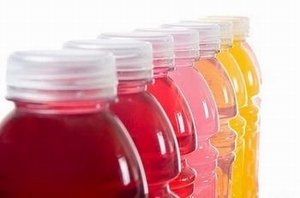 2010, U.S. children got an average of 68 fewer calories per day from sugary drinks than in 2000, according to the analysis in the American Journal of Clinical Nutrition. Both children and adults are drinking less sugar at meals and at snack time, the study also found.
2010, U.S. children got an average of 68 fewer calories per day from sugary drinks than in 2000, according to the analysis in the American Journal of Clinical Nutrition. Both children and adults are drinking less sugar at meals and at snack time, the study also found.The results are consistent with previous studies showing a decline in consumption of sugar generally, and soda specifically, between 1999 and 2008, said lead author Dr. Brian Kit of the CDC's National Center for Health Statistics in Rockville, Maryland.
There has been no corresponding dip in obesity rates over the decade, though, Kit noted.
"During our 12-year study duration, obesity prevalence, although high, has largely remained stable," he told Reuters Health.
Whether Americans are compensating for consuming less sugar by taking in more calories in other forms, or perhaps are exercising less, was not investigated in the current study but other research suggests it's probably the latter (see Reuters Health story of March 6, 2013 here: reut.rs/YYBE7F).
Kit and his colleagues analyzed responses to the National Health and Nutrition Examination Surveys, which include a home interview, a physical examination and an a series of questions about diet, from the years 2000, 2002, 2004, 2006, 2008 and 2010.
Participants, roughly 8,500 people each year, were asked what they had eaten in the past 24 hours.
The researchers categorized regular soda, fruit drinks, energy drinks, sports drinks and sugar-sweetened coffees or teas as "sugary drinks." Drinks containing only no-calorie artificial sweeteners were not included.
In 2010, kids ages 2 to 19 got about 155 calories per day from sugary drinks, down 68 calories from the year 2000. Adults took in an average of 151 sugary-drink calories per day, down 45 calories compared to the beginning of the decade.
Soda consumption declined the most, by 67 calories per day for kids. Sports and energy drinks actually went up over the same time period, but in 2010 they still contributed an average of only 10 calories daily for kids.
Among teenagers, sugary beverage intake went down by 84 calories per day, the largest drop for any age group and a significant change, according to Kit.
Because NHANES data are self-reported, the surveys probably underestimate the actual number of calories people eat, but the trend from 2000 to 2010 is encouraging, said Marion Nestle, professor of Nutrition, Food Studies and Public Health at New York University.
"These results are also consistent with industry figures that indicate a steady reduction in soda intake among Americans," Nestle told Reuters Health. "That's good news."
It's too soon to say what caused the drop, Kit said.
"We know there are wide efforts to reduce sugary drink consumption and we show a reduction in sugary drink consumption," he said. "However, we did not look at the effects of specific policies."
It's also too soon to stop encouraging kids to cut back on sugary drinks, according to Nestle.
"It would be even better news if soda companies weren't trying so hard to make up for the shortfall by marketing harder to minorities, low-income groups and low-income people in developing countries - the very people most at risk for obesity and related conditions," she said.





